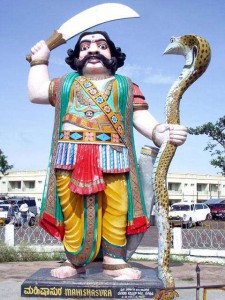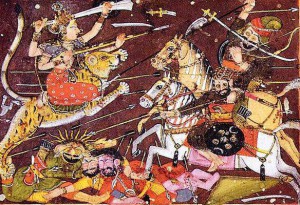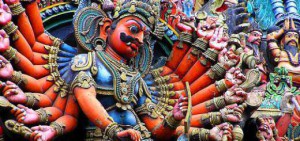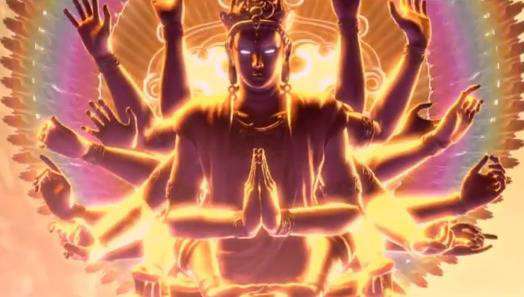No products in the cart.
Our earliest sensitivity of good and bad dates back to the childhood tales of the god and the demon. There have been as many descriptions of the devil as are for the god. The most righteous description I find is that god resides in our good deeds while the demon does in our bad.
We by now have been too familiar with the saying,
“An ideal mind is a devil’s workshop.”
The early civilizations maintained a fascinating relationship between the good and the bad. So, this dual was nature apparent in Hindu scriptures that were composed around 5000 BC and are evident in the Hindu traditions even today. On a small scale they form the expression of Hinduism as a whole.
The various situations and emotions that we as humans experience have been valuably represented through a collection of folk lore depicting this dual nature of good and bad in an interesting mix.

The stories we heard, have not always classified good and bad based on the physical stature, rather focused on their actions. While the greatest of the kings and sometimes gods themselves have been associated with greed for power and strength that have wronged them, the cruelest of the demons many a times have also been portrayed as the hero of the story because of their little acts of kindness.
We have been cautioned that all that shines is not gold, but were left to realize for ourselves that all that is dark isn’t just coal. It still has the brilliance of a diamond.
The earliest picture of the demon is the Asura. Asuras were perceived as the lesser beings of the dark or underworld, who were in constant battle with the Devas or gods, yet were closely related to them.
The Puranas paint the kinship of the Asuras and Devas. According to which Kashyapa, who married the 13 daughters of Prajapati is the father to all beings on earth including Devas, Asuras, Manavas or humans and the entire animal world.
Asuras being older are recalled as the primal gods of ancient times and the predecessors of the Devas.
An engaging story validates the above theory. The early Vedic texts heavily drew from the Aryans, originally the immigrants from central Asia who were worshippers of fire for its natural valour and named their god as the Ahura Mazda which later branched out as Asura and naturally found its way to India through the Persians. Even in our scriptures the god of fire or Agni was originally an Asura who later switched sides with to the Devas. The word “Assur” also represented the Assyrian nation and his worshippers, who were cruel with their treatment of the enemy. A hatred is thus known to have existed between the Indo-Aryans and the Persians. While cruelties were called off by the Persians later on, the Aryan family that migrated into India brought with them very bitter feelings towards Assur and thus the term Asura, which at one time was considered an appealing label for the Supreme Being, became descriptive only of those who were the enemies of the gods.
The word that was originally derived from asu, meaning breath through the means of a spirit, or “the Great Spirit” now is explained to be simply a contradictory of sura or god, meaning a non-god and therefore a demon.
The earliest of the Hindu scriptures speaks of the virtues of the Asuras, who were just good and equally powerful as the Devas, themselves and also mention of their potential to create wonders, including life itself. In the Rig Veda, the asuras were said to preside over moral and social phenomena and the Suras presided over natural phenomena. However, by the time the Brahmana texts were written, the character of the Asuras had become negative.
The Satapatha Brahmana cites that “the gods and asuras, both descendants of Prajapati, obtained their father’s inheritance, truth and falsehood. The gods, abandoning falsehood, adopted truth; the asuras, abandoning truth, adopted falsehood. Speaking truth exclusively, the gods became weaker, but in the end became prosperous; the asuras, speaking falsehood exclusively, became rich, but in the end succumbed.”
The later Vedic texts cite that the split was caused by the change in nature of the Asuras and hence a battle was raised to balance the two forces and create a harmonic peace reflective of us humans’ strive. In fact the name Asuras was in fact coined during this epic battle popularly referred to as churning of the sea, Samudra manthan, when they were rejected the Sura or wine of immortality, came to be known as the Asuras and for the same reason are in constant battle against the Suras or the Devas.
Alain Daniel says. “It is significant that it was not for their sins that the anti-gods had to be destroyed but because of their power, their virtue, their knowledge, which threatened that of the gods—that is, the gods of the Aryans.

In order to explain the demonization of asuras, mythology was created to show that though the asuras were originally just, good, and virtuous, their nature had gradually changed. The asuras were depicted to have become proud, vain, to have stopped performing sacrifices, to violate sacred laws, not visit holy places, not cleanse themselves from sin, to be envious of Devas, torturous of living beings, creating confusion in everything and to challenge the Devas.”
He perceives a change in the political alignment and moral conceptions to be the cause of the division.
“With new political alignments and alliances, as well as with changes in moral conceptions and ritual, some of the gods changed side the teachings of the wise asuras came to be incorporated into those of the Vedic sages and often, more or less openly replaced by them.”

On the other hand the Asuras slowly acquainted with the aboriginal tribes or the other non Vedic populations of India, who were out casted by the Aryans as the worshippers of Demons. The allusions to the disastrous wars between the Asuras and the Suras, found everywhere in the Puranas and the epics, seem to include merely episodes of the struggle of the Aryan tribes against earlier inhabitants of India. The Asuras are often grouped with different Hindu tribes such as the Kalinga, the Magadha and the Nagas. There still exist the Naga tribes in Assam and the Asur are a primitive tribe of ironsmiths in central India.
The Asuras were never originally the bad guys. Their creation is a result of the loopholes in transmission of the scriptures. Good and bad exists only in the deeds of man and not their social, political or physical origin.







It’s not the ideal mind that’s devil’s workshop. It’s the “IDLE” mind.